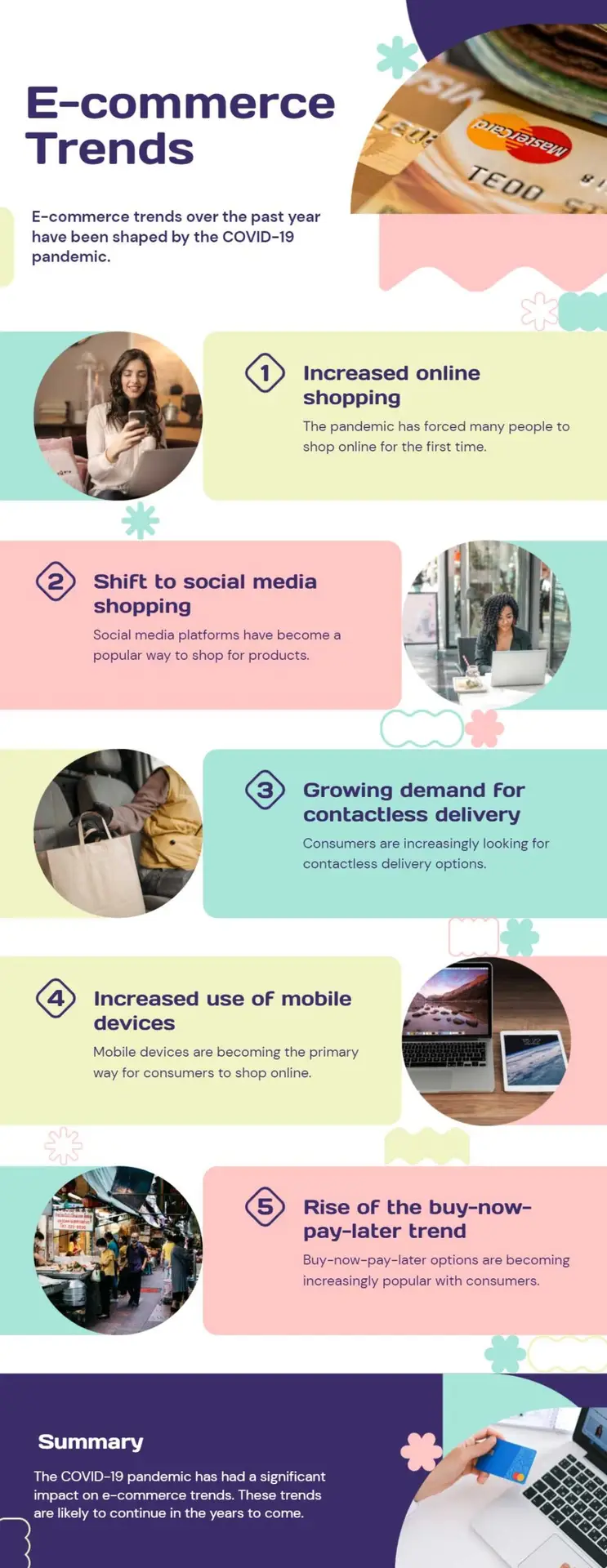Navigating the Future of E-commerce with Precision

Unlock your business's potential by mastering product selection, pricing strategies, & marketing channels.
In the rapidly evolving landscape of e-commerce, the difference between thriving and merely surviving lies in strategic foresight. Decisions on what to sell, how to price, which promotions to run, and where to engage customers are not just operational details—they are the cornerstone of your success. Welcome to the future of e-commerce strategy, where every choice is an opportunity to outpace the competition.
Anticipating the Pulse of E-commerce Evolution
As consumer preferences shift and new trends emerge, the agility to adapt defines the winners in the e-commerce race. From predicting the next big product trend to choosing the right marketing channels and pricing strategies, the path to e-commerce dominance is paved with data-driven decisions and innovative strategies. Dive into the world where understanding and anticipation are your best tools for success.

Challenges Identification

Navigating the Maze of E-commerce Challenges
As consumer preferences shift and new trends emerge, the agility to adapt defines the winners in the e-commerce race. From predicting the next big product trend to choosing the right marketing channels and pricing strategies, the path to e-commerce dominance is paved with data-driven decisions and innovative strategies. Dive into the world where understanding and anticipation are your best tools for success.
In-depth Problem Analysis

Unraveling the Knots of E-commerce Dilemmas
As consumer preferences shift and new trends emerge, the agility to adapt defines the winners in the e-commerce race. From predicting the next big product trend to choosing the right marketing channels and pricing strategies, the path to e-commerce dominance is paved with data-driven decisions and innovative strategies. Dive into the world where understanding and anticipation are your best tools for success.
Worst-Case Scenario Illustration
The Cost of Inaction: A Cautionary Tale
As consumer preferences shift and new trends emerge, the agility to adapt defines the winners in the e-commerce race. From predicting the next big product trend to choosing the right marketing channels and pricing strategies, the path to e-commerce dominance is paved with data-driven decisions and innovative strategies. Dive into the world where understanding and anticipation are your best tools for success.

Case Studies
Boo.com
Boo.com aimed to revolutionize online retail with high-end fashion and sports goods, incorporating advanced technology for a unique shopping experience. Despite significant investment in technology and marketing, the company struggled with technical issues, high operational costs, and a failure to understand market needs, leading to its collapse in 2000. A critical mistake was underestimating the complexity of global e-commerce logistics and overestimating the readiness of the market for such an advanced and bandwidth-heavy website.
Jabong
Jabong was an Indian e-commerce platform offering a wide range of fashion and lifestyle products. Despite a strong start and significant brand recognition, Jabong faced stiff competition, issues with customer service, lack of innovation, and financial instability. The departure of key founders and leaders further destabilized the company, leading to its downfall. Jabong’s story is a stark reminder of the importance of maintaining competitive edge, innovation, and financial prudence in the fast-paced e-commerce sector.
Move Loot
Move Loot was an online furniture resale marketplace that attempted to differentiate itself by holding inventory in a stockroom, a decision that ultimately led to its failure due to the unsustainable costs associated with managing physical inventory. This case underscores the importance of a sustainable business model that carefully considers the costs and logistics of inventory management.
Totsy
Totsy offered flash sales on high-end fashion brands but struggled due to a poor product strategy. The company failed to adapt to changing market dynamics where the allure of flash sales diminished over time, highlighting the risks of relying on a single sales strategy and the need for continuous market adaptation.
These case studies illuminate common pitfalls in e-commerce, including the underestimation of logistical challenges, the necessity of market and customer understanding, the importance of a sustainable and adaptable business model, and the critical role of financial management and innovation. Each failed company provides unique insights into specific areas of e-commerce strategy that were neglected or mismanaged, serving as cautionary tales for current and future e-commerce ventures
Failure in Pricing Strategy
E-commerce businesses can falter by making critical mistakes in their pricing strategies. One common error is pricing too cheaply, which can severely cut into profits. Conversely, pricing too expensively can alienate potential customers and leave a business out of the competitive market. Additionally, basing prices solely on costs without considering market demand or competitor pricing can lead to failures. A flexible and well-researched approach, considering both cost and perceived value, is crucial to avoid these pitfalls.
Bad Promotions
Bad timing in promotions can also lead to e-commerce failures. Businesses must carefully plan their promotional campaigns by analyzing past successes and market trends to maximize the impact. Failure to do so can result in promotions that do not resonate with the target audience or fail to achieve the desired sales uplift.
Leading with the Wrong Product
Leading with the wrong product, one that does not meet market needs or fails to resonate with the target audience, can quickly lead to an e-commerce venture’s downfall. The product selection must be guided by thorough market research, understanding customer needs, and current trends to ensure that the offering is both relevant and appealing.
Focusing on the Wrong Marketing Channel
Focusing on the wrong marketing channel can also be detrimental. An e-commerce business must identify and utilize the channels where its target audience is most active and responsive. Relying on a marketing channel that does not reach or engage the intended demographic can result in wasted resources and missed opportunities for sales.
The key takeaway from these failures is the importance of a balanced and informed approach to e-commerce strategy. This includes setting competitive yet profitable prices, timing promotions correctly, selecting products based on market demand, and choosing the right marketing channels to reach and engage customers. By learning from these common mistakes, e-commerce businesses can better position themselves for success in the highly competitive online marketplace.
For a more in-depth understanding and to avoid these pitfalls, businesses should consider leveraging insights from pricing strategy experts and marketing professionals, as well as adopting tools and technologies that enable better market analysis and decision-making
Pricing Strategy Failures
An automotive supplier to a well-known car manufacturer provides a clear example of a pricing strategy failure. The supplier priced its park assist technology at $100 based on costs and margin expectations, whereas the car manufacturer recognized the value of this feature to its customers and sold it for $670. This discrepancy highlights a significant loss in potential value due to the supplier’s failure to recognize the customer’s perceived value of the product.
The Importance of Strategic Pricing
Research highlighted by Wharton professors Jagmohan S. Raju and Z. John Zhang emphasizes the substantial impact pricing strategies can have on a company’s profits. They pointed out that a 1% price increase could boost profitability by 11%, showcasing the importance of strategic pricing over tactics like cost-cutting or increasing sales volume. They advocate for systematic and strategic pricing, which requires a thorough understanding of the target market, competitor pricing, and the value provided to customers.
Common Pricing Mistakes
Businesses often make several common pricing mistakes, including basing pricing strategies solely on costs rather than customers’ perceptions of value, applying a one-size-fits-all approach, and failing to have a clear pricing strategy aligned with business objectives. These mistakes can lead to either overcharging or undercharging customers, damaging profitability and competitive positioning.
Addressing Pricing Strategy Failures
To address pricing strategy failures, it is crucial to align pricing with the value perceived by customers, segment customers based on their needs, and understand that different products and services add varying levels of value. Discounting prices without considering the long-term impact on brand perception and profitability can be detrimental. Additionally, businesses should avoid incentivizing sales teams based solely on revenue, as this can lead to a focus on volume over profitability.
These insights underline the critical nature of pricing strategies in the success of e-commerce ventures. Correcting these common mistakes requires a deep understanding of market dynamics, customer needs, and competitive landscapes. For businesses looking to refine their pricing strategies, it’s advisable to adopt a more customer-centric approach, consider the value delivered, and continuously monitor and adjust pricing in response to market changes and customer feedback.
Focusing on the wrong marketing channels or strategies has led several well-known products and brands to underperform or fail. Here are some notable case studies:
Segway
Despite its innovative technology, Segway failed to find a significant market partly because of its unclear marketing strategy, which left consumers wondering why they needed such a device over traditional transportation methods.
Microsoft Zune
Introduced as a competitor to Apple’s iPod, Zune struggled because it launched without distinct features to set it apart and failed to capture the market’s attention, partly due to ineffective marketing strategies.
Google Glass
Despite its advanced technology, Google Glass faced consumer pushback due to privacy concerns, an unfashionable design, and a high price point. These issues were compounded by marketing that failed to adequately address these concerns.
Amazon Fire Phone
The Fire Phone was criticized for being mediocre and overpriced. Its exclusive availability through AT&T further limited its market reach, demonstrating a misalignment in marketing and distribution strategy.
Google Plus
Aimed to compete with Facebook and Twitter, Google Plus struggled to gain traction. The platform’s marketing failed to convince users of its unique value, leading to its eventual shutdown.
Tata Nano
Marketed as the “One Lakh Rupees Car,” Tata Nano’s positioning as a cheap, affordable car inadvertently turned off potential buyers who saw car ownership as a status symbol rather than merely a mode of transportation. This case highlights the importance of understanding consumer perceptions and aspirations in marketing strategies.
Optimal Outcome Visualization
Crafting the Blueprint for E-commerce Success
Now, envision a different scenario: Your products are the talk of the online world, your pricing strategies are both competitive and profitable, and your marketing channels are perfectly aligned with your target audience. This is the reality for businesses that leverage smart, adaptable strategies to stay ahead of the curve.

Case Studies
Olist Case Study (Tryolabs)
Olist used historical sales data to estimate future demand for items, setting a minimum threshold for consideration based on sales history. They classified items based on demand history and price changes, focusing on smooth, intermittent, and erratic demands for easier modeling. This approach allowed Olist to select a specific subset of items ready for price optimization without further experimentation, leading to a more efficient and targeted pricing strategy.
Ad Hoc Atelier (Tidio)
Ad Hoc Atelier, an Italian e-commerce platform, boosted conversions significantly by incorporating live chat tools, reducing cart abandonment rate, and decreasing average response time. By focusing on a personalized customer approach and leveraging sales chatbots, Ad Hoc Atelier improved customer engagement and reduced shopping cart abandonment, demonstrating the effectiveness of using technology to enhance the shopping experience.
Dollar Shave Club (Tidio)
Dollar Shave Club’s success is attributed to its unique value proposition, subscription model, and data-driven marketing. By offering affordable, high-quality razors directly to consumers and leveraging data to optimize marketing efforts, Dollar Shave Club established itself as a major player in the men’s grooming industry. Their approach highlights the importance of understanding customer needs and preferences to build brand loyalty and recurring revenue.
E-commerce Platform Pricing Strategy (Pricing Solutions)
An international niche e-commerce platform faced challenges in aligning visitor traffic with profits amidst tough competition. By re-evaluating geographic segmentation and pricing strategy, and implementing targeted price increases based on a Revenue Impact Model, the platform achieved a 3% increase in revenue and a 30-60% improvement in upgraded product performance. This case study underscores the critical role of strategic pricing and geographic segmentation in enhancing e-commerce profitability.
These case studies exemplify how e-commerce businesses can harness the power of data and technology to refine their strategies across various aspects of their operations. From optimizing pricing and leveraging chatbots to improve customer interaction, to adopting subscription models and revising marketing strategies based on customer insights, these businesses have demonstrated significant growth and efficiency gains.
Empower Your E-commerce Strategy Today
Now, envision a different scenario: Your products are the talk of the online world, your pricing strategies are both competitive and profitable, and your marketing channels are perfectly aligned with your target audience. This is the reality for businesses that leverage smart, adaptable strategies to stay ahead of the curve.























